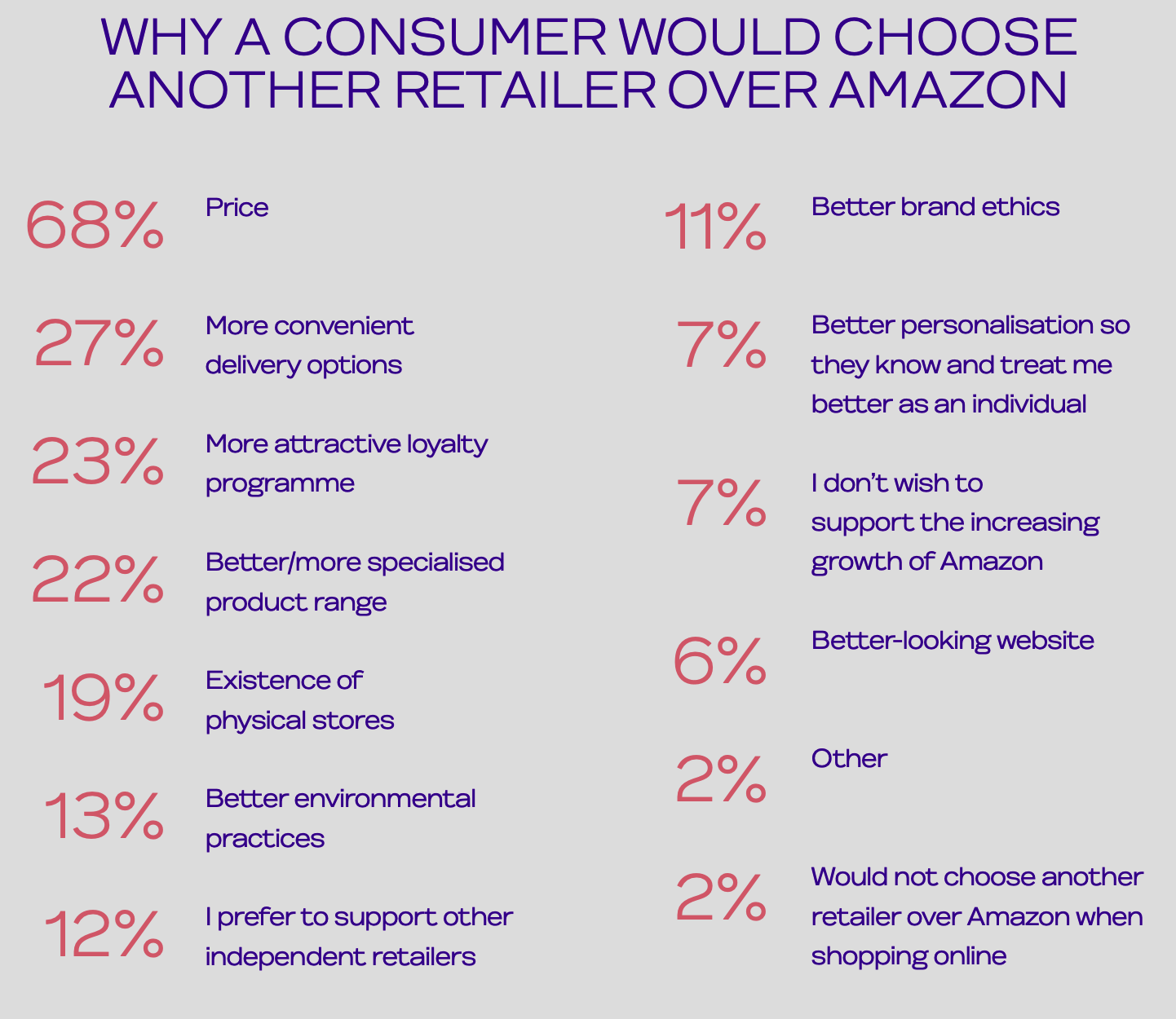Global e-commerce consultancy, Wunderman Thompson Commerce releases the 4th edition of their Future Shopper report. The report seeks to identify trends in consumers’ digital buying behaviors, with the aim of helping to influence organizations’ strategies and to ensure that they are ready for the consumer and the channels of the future. Here are the key findings –
The Customer Journey
The rise of digital commerce has reduced the linear customer journey i.e. it has brought more touchpoints and channels. An online shopping journey can start in many ways. But where do online shoppers get their inspiration when they are looking to purchase products online? According to the findings –
- Amazon comes top (52%) when it comes to inspiration about finding products to purchase.
- Search engines came second with 51% of online shoppers getting their inspiration from the likes of Google.

- For a number of years, the battle has been on to become the starting point for online shopping journeys. Being the first online touchpoint gives the provider enormous control over the ensuing customer journey and allows them to monetize their platform by offering advertising and media opportunities to others. Google was the first to realize this and has built its empire on this model.
But as time passed Amazon began rising up the ranks, with 63% of consumers saying that their online searches for products now start with the Seattle firm. Search engines take the second spot, with 48%.

What drives the purchase?
- 98% of online shoppers cite price as the most important factor when it comes to making a purchase.
- While it might seem obvious that consumers would want to know information about the product before they purchase it online, a number of online stores neglect this area. The reason why accurate product descriptions (94%) were in second place with respect to factors involved in making a purchase followed by whether the item was in stock to purchase online (94%).
- Delivery service has become a crucial element of the online commerce experience with consumer loyalty skewing more towards service rather than the brand in recent years.
- In the age of instant gratification, consumers’ patience has become weaker. According to the study, consumers globally on average wait less than three days (2.85) for a delivery.
- But the data showed that customer expectations with regards to delivery waiting time vary in specific countries. For eg – In Spain and the US, customers are expecting faster delivery since last year but in the UK, Netherlands, Germany, and France, consumers are expecting deliveries to take longer.
Loyalty
- Amazon is perceived by 57% of online shoppers to be the number one when it comes to getting products to customers in a timely fashion. These numbers have remained broadly consistent across all age groups.
- The study found that supermarket loyalty programs are still incredibly popular, with nearly three-quarters of respondents (74%) belonging to a grocery loyalty scheme – more popular even than Amazon’s Prime.
- Globally, the membership of supermarket loyalty schemes is higher amongst women (78%) compared to men (68%).
Direct to Consumer Sites
- The only reason consumers would be inclined to buy directly from brands is the price. Across all age groups and countries, consumers still point at better prices (77%) as the biggest factor in whether they would go directly to a brand site.
- 54% of online consumers identify free delivery as the second important reason for going direct.
- Fast and convenient delivery was valued by a third (32%) of all shoppers and was particularly important to 16-24- year olds (38%). This once again underlines the importance of service in driving consumers’ choice of where to transact. The positive effect of good service during the COVID-19 crisis will also be compounded.
- Other considerations that consumers said would draw them towards brand websites include access to the full product range (28%), exclusive products (23%), better information about products (16%), bundled products (12%), personalized products (11%) and advanced/pre-ordering options (7%).
WACD (What Amazon Cannot Do)
- Amazon’s rising dominance is a challenge for brands. Whilst brands may be selling their products on Amazon’s marketplace, they must also think about fighting back against Amazon to re-own their customer and bring them back into direct contact with the brand.
- According to the study, price again stands as the top factor that would make consumers go to the brand site and not Amazon.
- Specialism of range is certainly an area where Amazon, other marketplaces, and even retailers cannot compete. This sits hand-in-hand with better personalization and allows consumers to feel as if they are being treated as individuals whose specific needs are being met. Focusing on environmental practices and ethics can also be an area that independent brands can exploit.

The Amazon Influence
- Over half of consumers (52%) are worried about the likes of Amazon dominating the retail industry.
- On the flip side, 66% of consumers are also excited about getting all of their online purchases from one retailer.
- 76% of online shoppers identify Amazon as a place to purchase products.
- 36% of online consumers using it as an entertainment provider.
- 25% of consumers identifying it as a source of product reviews irrespective of whether they end up transacting online or physically.
- Only 7% of consumers use it as somewhere to purchase groceries.

Redefining Business Models In the New Age
- Over half of online shoppers (51%) have a preference for retailers and brands with both physical and online stores.
- Over half (52%) wish brands would be more innovative in how they use digital technology to improve their experience, with 47% saying companies being more digitally innovative would actively influence their purchasing decision.
- 44% of shoppers are excited about brands providing more seamless shopping experiences such as cashless payments.
- The study also notes that how the Covid-19 crisis pans out will eventually have an impact on physical retailing.
Rise of digital products
- 34% of shoppers would prefer their online purchases to be digital and instantly downloadable, rather than physical. This number is the biggest amongst the millennial crowd (25-34-year olds), with 44% preferring a digital service over a product, and the lowest group being the 55+ with 17%.
- This is important to note because the expectations of young consumers are being increasingly set by the digital world.
- 32% said that one thing that they would change about buying things online, would be that for all products to be delivered in two hours. This would be perfectly feasible if the products were digital.
- The study suggests that Covid-19 could accelerate this trend and also highlights that this trend is based on age. Digital and streamed products are most popular with 16-24-year-olds, with 34% buying digital products while physical products are most popular with over 55s (72%).
Social commerce
- 42% of consumers are now actively recommending products through social platform activities such as tagging or direct messages to their friends.
- 19% of consumers favor social media platforms as a source of inspiration.
- When it comes to purchasing through social media, customers bought from this channel on average 3.46 times a month.
- [Authors note – With the introduction of Facebook and Instagram shops and Tik Tok’s integration with Teespring, it will be interesting to see how the online commerce landscape will evolve in the coming years.]
Smart assistants and voice
- 27% currently use or have used a voice assistant to make a purchase.
- Prime also makes a big difference with 39% of prime users currently using or having used smart assistants to make a purchase.
- There is still a significant percentage of consumers who are not yet willing to take this step. The percentage who have never used voice ordering services and do not intend to in the future is 32%.









